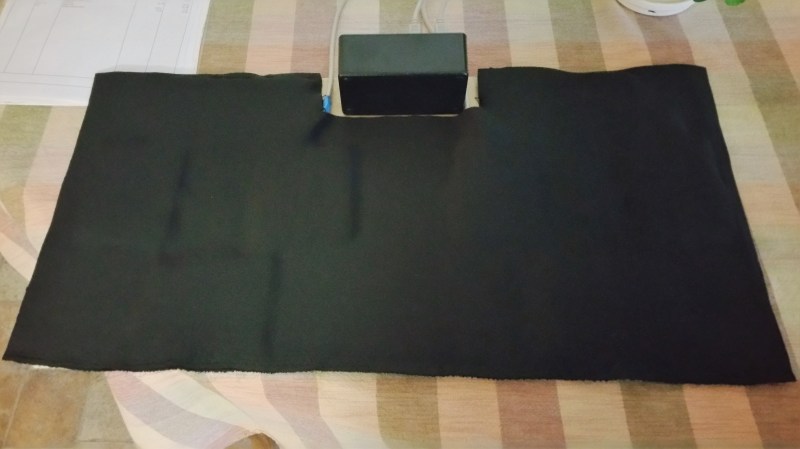ALS robbed one of [C. Niggel]’s relative’s of the use of their upper body. This effectively imprisoned them in their house; ALS is bad stuff. Unfortunately too, the loss of upper body mobility meant that they couldn’t even use the computer to interact with people and the outside world. However, one day [C. Niggel] noted that the relative’s new electric wheelchair was foot controlled. Could this be adapted to a computer mouse?
He looked up commercial solutions and found them not only prohibitively expensive, but also fraught with proprietary drivers and all sorts of bad design nonsense. With all of the tools out there today there was no reason this couldn’t be quickly prototyped and sent to the relative in need.
He used a combination of conductive thread, neoprene, and velostat to build the pads themselves. The pads were balanced with some adjusting resistors in series. The signals are sent to an Adafruit Feather board which interprets them and converts it to a PS/2 standard.
The first version of the mouse used separate pads glued to a MDF board with contact cement. However this, along with some other initial design flaws, resulted in premature failure of the mouse. [C. Niggel] quickly returned to the lab and produced a new version with more robust construction and mailed it off. So far so good!





















Helping people with hacks > most of everything else
Question: Why not use a trackball upside down?
I imagine that that might make controlling the mouse a little more difficult as that would probably require more of a fine tuned set of movements that his relative might not have. This is purely speculation but i imagine if you’re wheelchair bound you aren’t getting much use of the muscles in your legs/feet.
Fair enough.
I’d say the article just does not give enough information at all to paint a picture of what is actually the story.
When I was sitting a wheel chair for some time, I definitely had enough control over my feet to use a trackball (I actually was able to – very slowly so – write with a pen on paper). BUT I did not suffer from ALS, so this isn’t a valid argument.
The approach of this project just does not “feel” very well thought out to me, although it surely counts as a “hack” and therefor has its place around here …
Could maybe use this one the right side up… https://www.amazon.com/Infogrip-Inc-12000005-BIGtrack-Trackball/dp/B0006ZM7VY … I picked one up cheap, ball is grapefruit sized, I figure I could use it with my foot, although the buttons are not very conveniently located for that use.
So I asume this is a touch pad not a mouse? Leap motion could be used here perhaps.
are u fu**** kiddin ? hackaday has change to page of kiddish hardware…
Trolling much? Or perhaps you just another asshole? If not, care to explain how this is not a hack?
Why is is whenever someone says “That’s not a hack!” I want to say “Show us the pocket fusion FTL laser quantum computer you made out of an AM radio and a can of pringles!”? That’s not snarky, is it?
You know what I realised though. The domain and site name only promises one hack a day, maybe this wasn’t it. :-D
Why not hack a DDR mat?
Probably doesn’t need a heck of a lot of hacking even. Google joymouse to get a mouse driver that will work with any joystick/gamepad device.
Might be OK for the left click & right click inputs, and it’d certainly be a good contendor for being durable enough. I’d imagine being able to only direct the cursor in cardinal directions (*maybe* with diagonals too?) to be suboptimal and a cause of frustration.
If Wacom tablets weren’t so closed I’d imagine they might be a suitable starting point for patients with similar physical dexterity to Christy Brown in My Left Foot, but the nibs (on early models at the least) can wear all too quickly, and I’m unsure how well an ergonomic-for-foot-use stylus adaptation with an android touchscreen purely for use as an input device would be considering the cost of any screen and the low budget necessity.
Definitely like seeing stuff like this posted on Hackaday. I approve.
I came here expecting an 80 foot rodent mechagodzilla. Greatly disappointed.